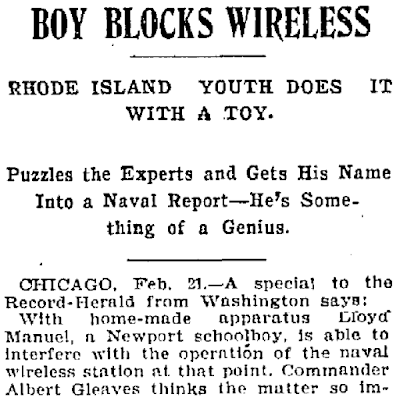The Radio Club at Brown University dates to the end of the First World War when the United States government lifted
restrictions on the private operation of wireless equipment. Student amateur radio operators formed the new club during the Fall semester in 1919.
An early transmitter used on campus was described as "a ½ KW rotary spark set and a two step amplifier" in the
September 1920 QST magazine. One of the call signs used was
1LAU which was assigned to student Herbert R. Grimshaw. The emissions from the crude transmitters used by amateurs during this time caused stations in the same geographic area to interfere with each other. President of the club E. Standish Palmer proposed a system for managing the problem:
"Providence has considerable QRM [interference] to overcome and some sort of a control station is being considered. Palmer suggests different hours for the different classes of communication and a visiting committee to go to the stations of the various amateurs who overstep and tune them up. This is a good idea. Help the young fellows out in every way possible. Make them feel as though we are helping and not trying to dictate to them."
Another transmitter was a home-made set with two vacuum tubes. The alternator used to generate the alternating current is not shown in the photo below. It produces an
Interrupted Continuous Wave (I.C.W.) which, like the rotary spark gap described above, was used to send Morse code. These transmitters were not capable of voice communications.
 |
| Credit: QST, April 1921. |

